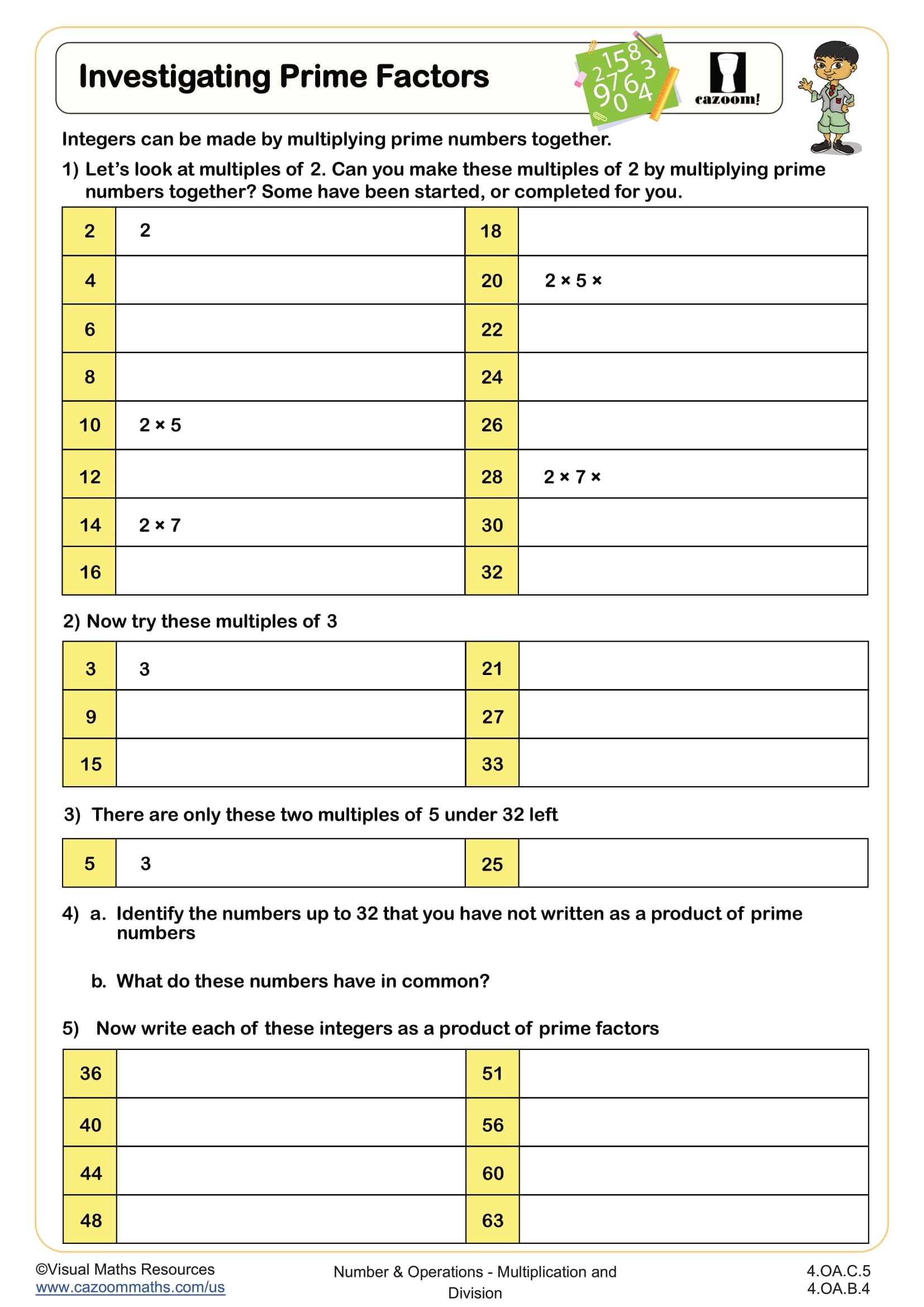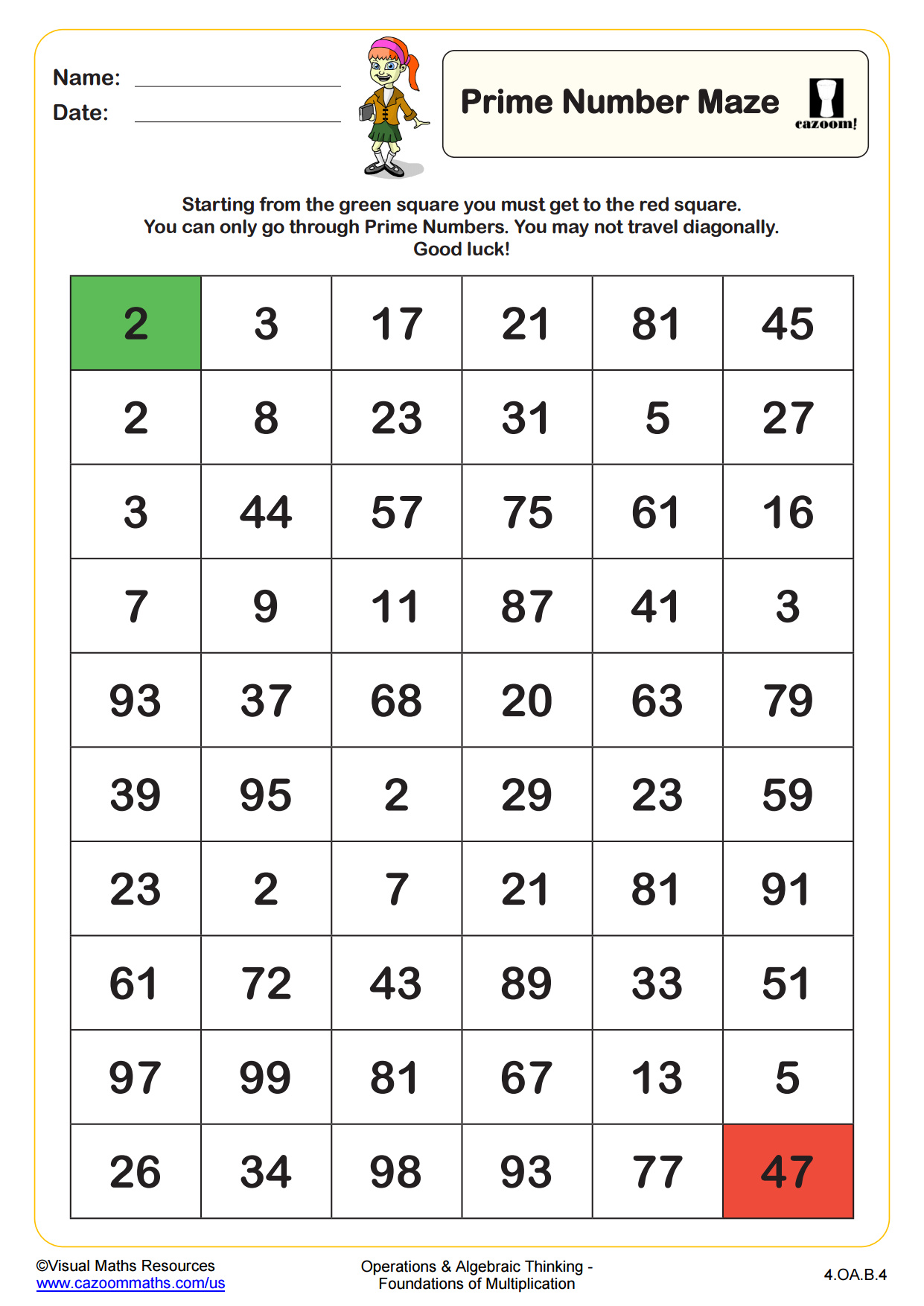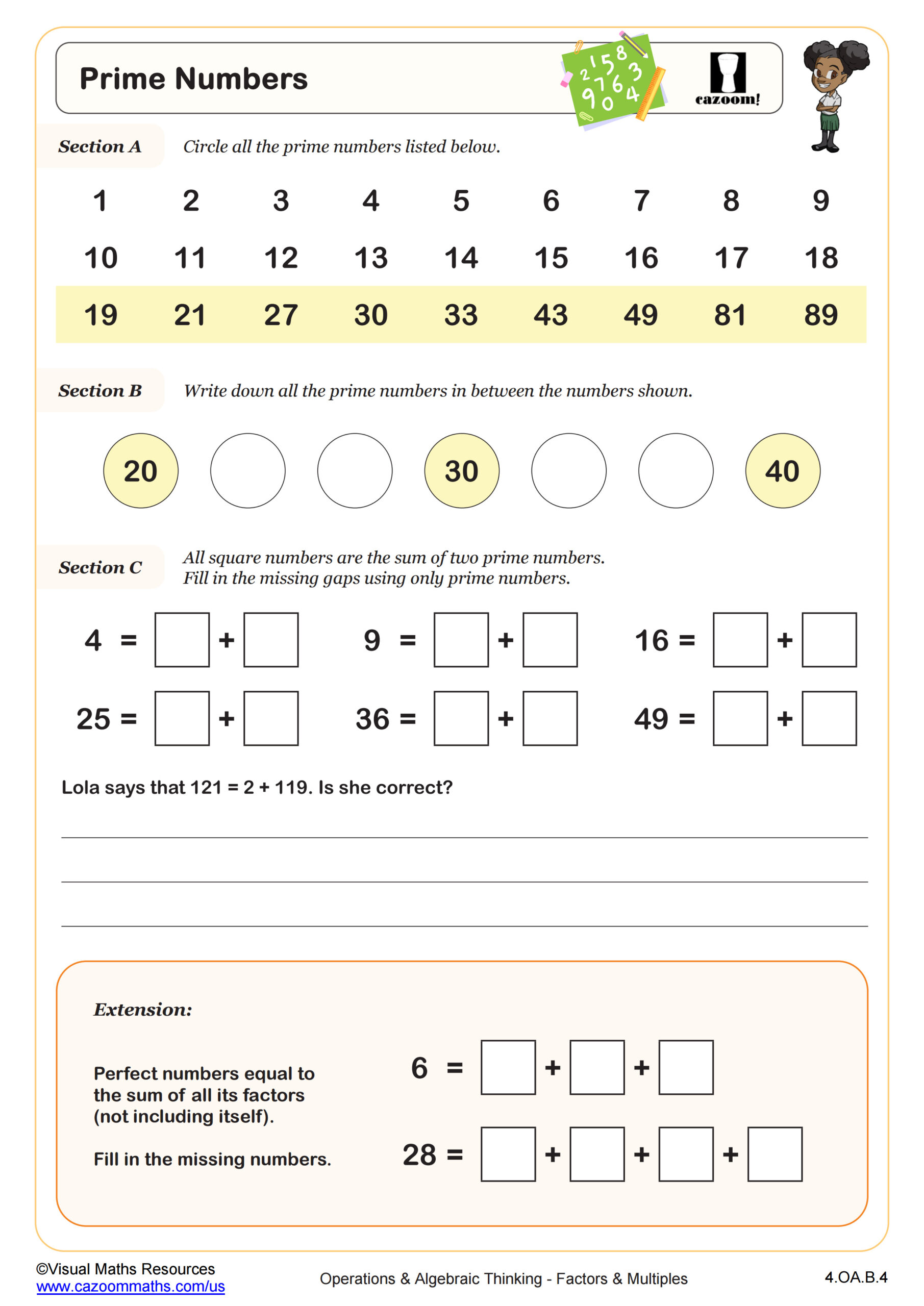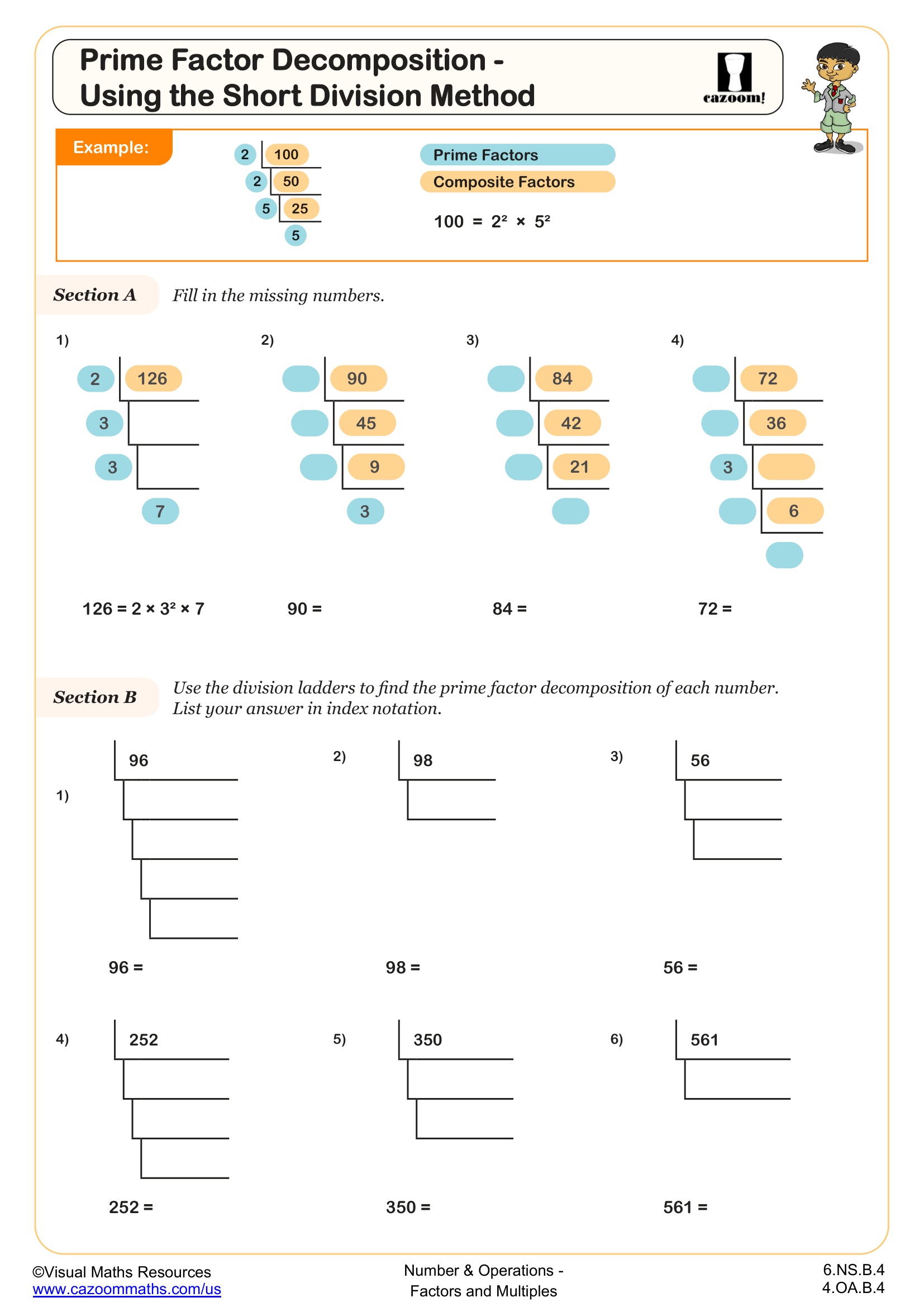Investigating Prime Factors WORKSHEET
Generate a number or shape pattern that follows a given rule. Identify apparent features of the pattern that were not explicit in the rule itself. For example, given the rule “Add 3” and the starting number 1, generate terms in the resulting sequence and observe that the terms appear to alternate between odd and even numbers. Explain informally why the numbers will continue to alternate in this way
Investigating Prime Factors WORKSHEET DESCRIPTION
Investigating Prime Factors is an excellent way of introducing learners to writing numbers as the product of their prime factors.
Using multiplication facts helps students understand how numbers are constructed from their prime components.
Here students will look at how multiples of 2, 3 and 5 under 33 can be written using a series of prime numbers multiplied together. This provides a good base for pupils as they consider how to link numbers such as 14 and 28 and other pattern spotting.
Learners will progress to finding the product of prime factors for 36, 40, 44, 48, 51, 56, 60, and 63 without the guidance provided earlier.

RELATED TO Investigating Prime Factors WORKSHEET
Frequently Asked Questions
This investigating prime factors worksheet is designed for students in 4th Grade and aligns with Common Core State Standards.



